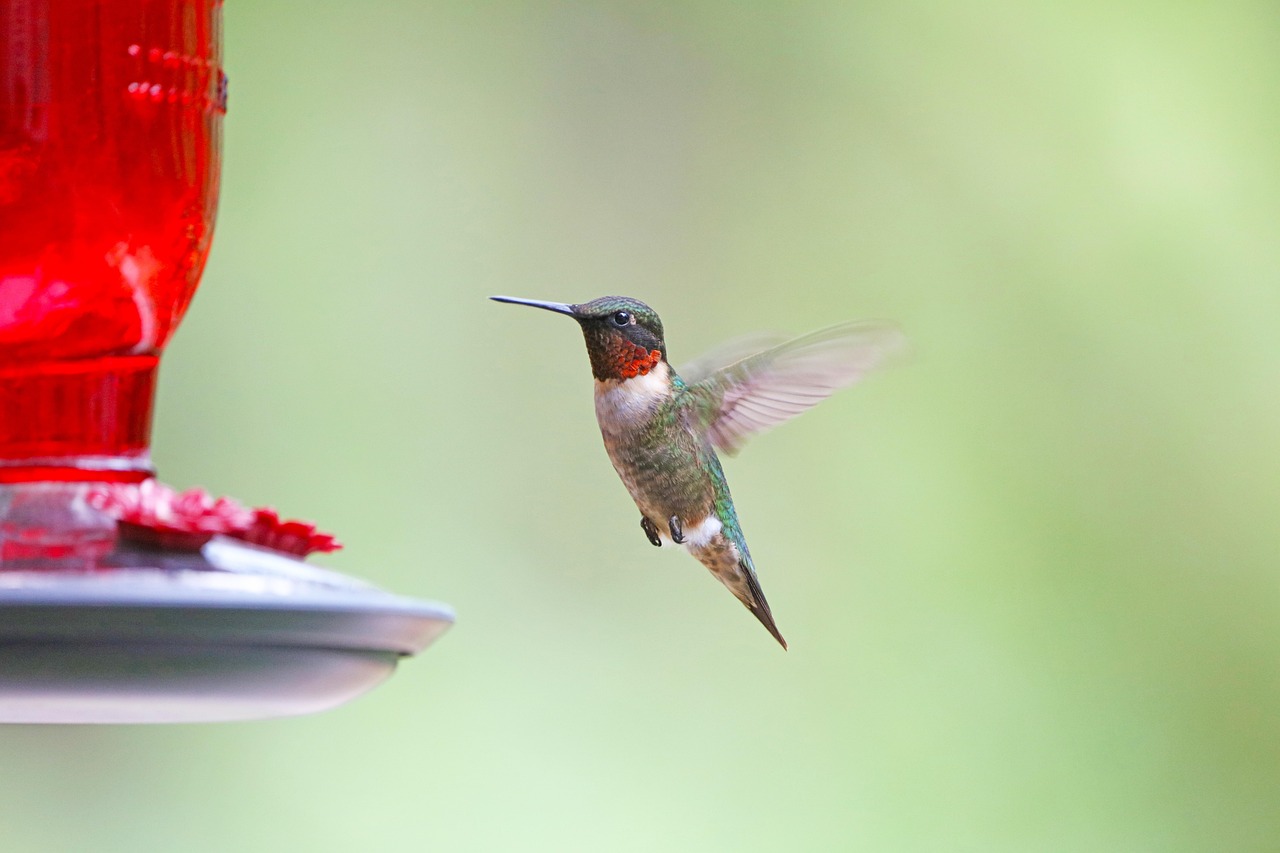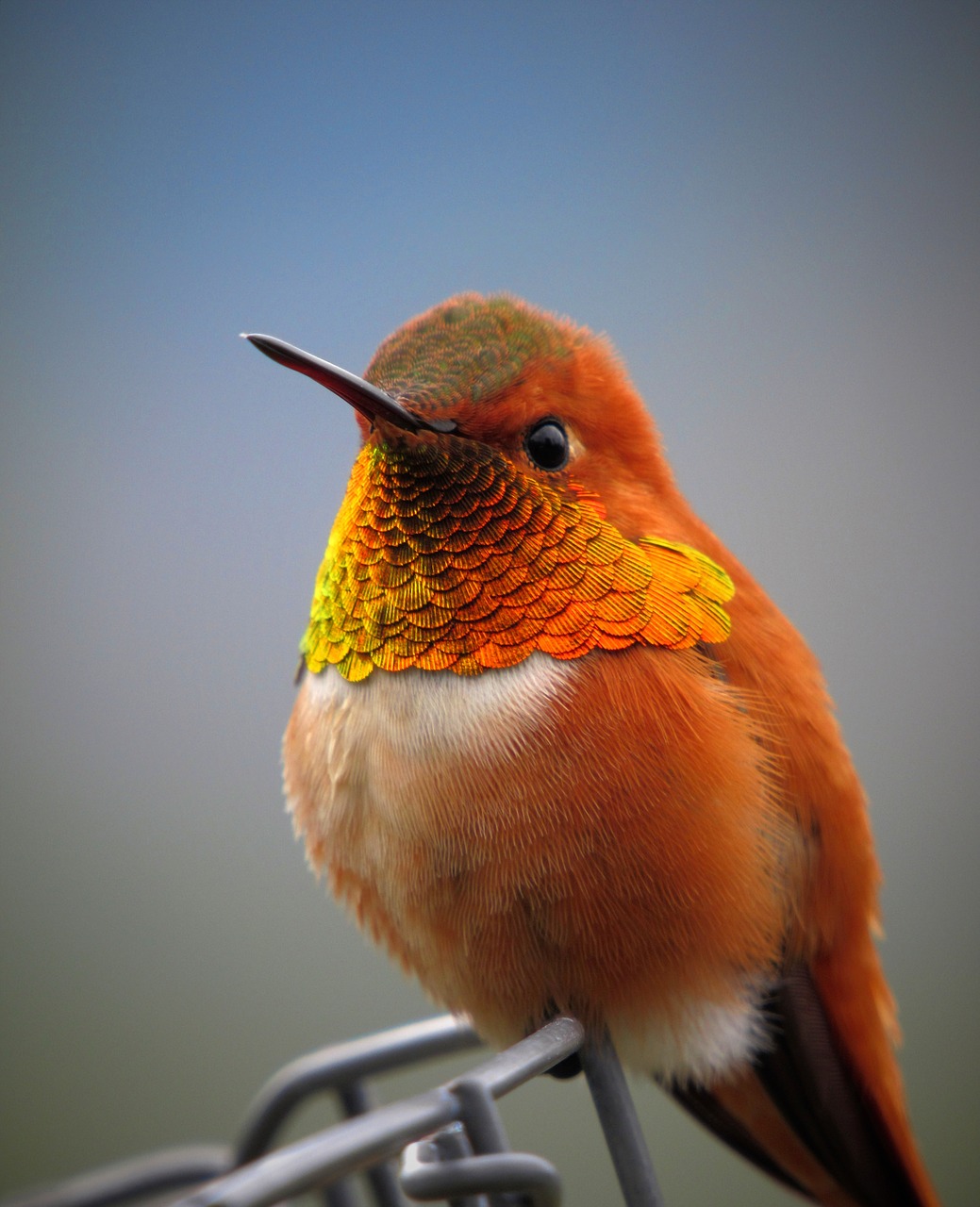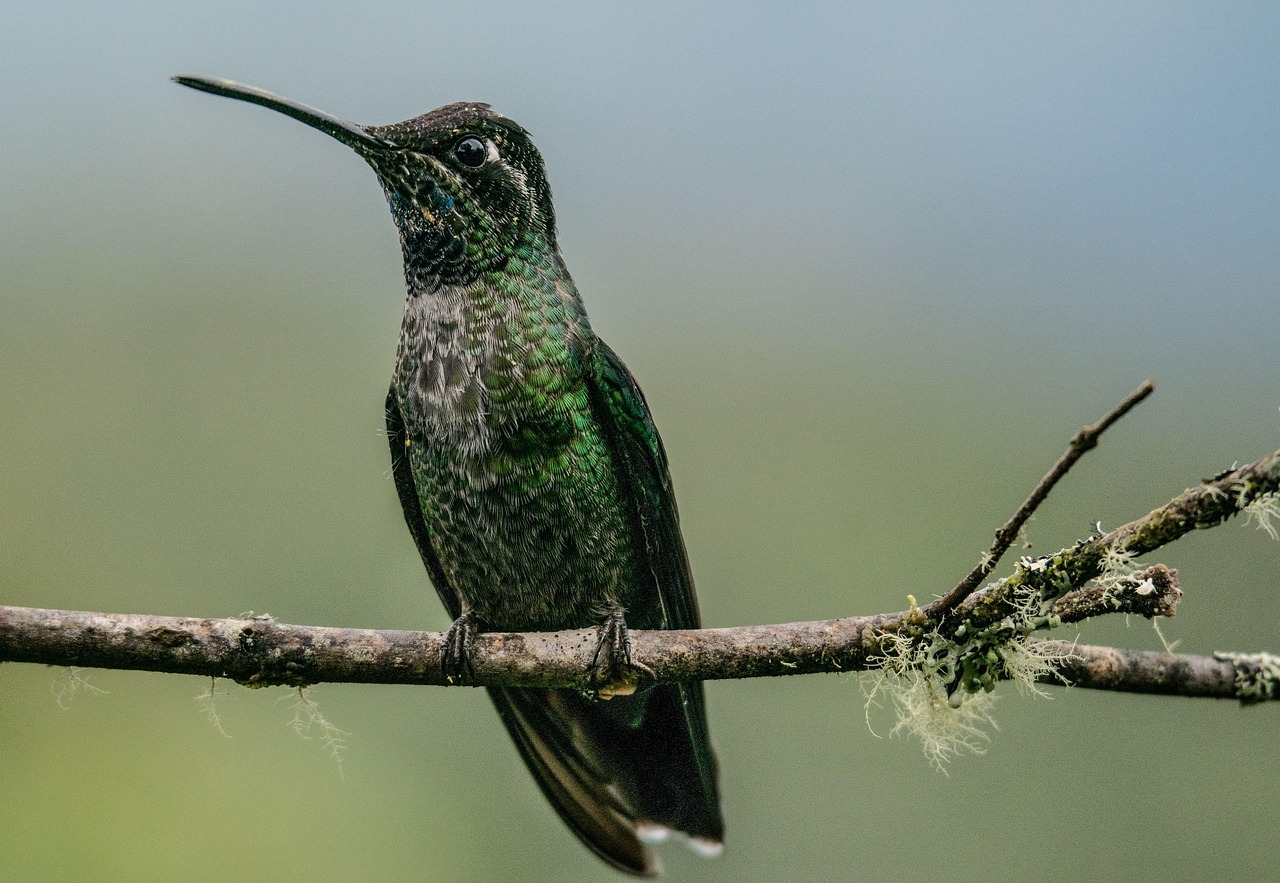Hummingbirds possess unique hovering abilities that provide significant evolutionary advantages. This capability allows them to feed on nectar from flowers while suspended in mid-air, evade predators, and establish territorial dominance, ensuring they can thrive in diverse environments.
Understanding Hummingbird Hovering

The remarkable ability of hummingbirds to hover in place is a complex adaptation that has evolved over millions of years. Unlike most birds, which rely on gliding or flapping to move through the air, hummingbirds have developed specialized flight mechanics. These adaptations allow them to maintain stability while feeding on nectar and to maneuver rapidly in search of food or during territorial disputes.
Hovering is made possible primarily by their unique wing structure. Hummingbirds have a rotating wing joint that enables them to flap their wings in a figure-eight motion. This movement generates lift both on the upstroke and downstroke of their wing beats, creating the necessary aerodynamic forces for sustained hovering.
In addition to their wing structure, hummingbirds have powerful breast muscles that make up about 30% of their body weight. These muscles are essential for rapid wing beats, which can exceed 70 flaps per second in some species. This high frequency of wing movement requires a significant amount of energy, making it crucial for hummingbirds to feed frequently on high-energy nectar sources.
Energy Management in Hovering
The energy demands of hovering are substantial. To sustain their high metabolism, hummingbirds must consume large quantities of nectar daily. The sugar content in nectar provides essential calories required for their vigorous activity levels. A single hummingbird can visit hundreds of flowers in a day, often consuming twice its body weight in nectar and insects.
The efficiency of their hovering ability also plays a critical role in their feeding strategy. By hovering, hummingbirds can access nectar from flowers that other birds cannot reach. This behavior reduces competition for food resources and allows them to exploit ecological niches effectively.
Predation and Territorial Advantages
Hovering not only aids in feeding but also offers significant advantages against predators. The ability to remain stationary in the air can help hummingbirds evade larger birds and other threats while they feed. Their rapid flight patterns allow for quick escapes, often changing direction in an instant, which confuses potential predators.
Moreover, hovering is integral to territorial behavior. Male hummingbirds are known for their aggressive displays when defending feeding territories. By hovering at specific spots, they can assert dominance over an area, deterring rivals and attracting mates. This display is crucial during breeding seasons when competition is fierce.
Comparison with Other Birds
To better understand the advantages of hummingbird hovering, it is helpful to compare their abilities with those of other bird species. The following table summarizes key differences in flight capabilities:
| Bird Type | Hovering Ability | Wing Structure | Feeding Style |
|---|---|---|---|
| Hummingbird | Excellent | Figure-eight wing motion | Nectar feeding |
| Eagle | Poor | Strong soaring wings | Predatory hunting |
| Sparrow | Poor | Short flapping wings | Ground foraging |
| Dragonfly (not a bird) | Good | Independent wing movement | Insect hunting |
This comparison highlights the unique adaptations hummingbirds have developed for hovering and feeding efficiently in their ecological niche. These evolutionary traits have allowed them to become one of the most specialized groups of birds on the planet.
Adaptations Supporting Hovering
The ability of hummingbirds to hover effectively is supported by several anatomical and physiological adaptations. These adaptations not only facilitate their unique flight patterns but also enhance their survival in diverse environments. Understanding these features provides insight into how hummingbirds have evolved to dominate specific ecological niches.
Wing Morphology
One of the most critical adaptations for hovering is the specialized morphology of hummingbird wings. Unlike other birds, hummingbird wings are long and narrow, allowing for a greater range of motion.
- Wing Rotation: Hummingbirds can rotate their wings 180 degrees at the shoulder joint. This unique feature enables them to flap their wings in both directions, generating lift effectively during both the upstroke and downstroke.
- Wing Flexibility: The flexibility of their wings allows them to adjust their angle of attack rapidly, which is crucial for maintaining stability while hovering.
- Wingbeat Frequency: Hummingbirds can achieve a high wingbeat frequency, with some species flapping their wings more than 80 times per second. This rapid movement is essential for generating the necessary lift in hovering flight.
Muscle Structure and Energy Utilization
The muscle structure of hummingbirds is another vital adaptation that supports their hovering ability. Their breast muscles, specifically the pectoralis major, are adapted for quick bursts of energy.
- Muscle Composition: These muscles have a higher proportion of fast-twitch fibers, which enable rapid contractions. This composition allows for quick wing beats essential for hovering.
- Energy Storage: Hummingbirds store energy in the form of fat reserves, which they rely on during periods when food is scarce. This ability to store energy is crucial for sustaining their high metabolism.
- Metabolic Rate: Hummingbirds have one of the highest metabolic rates among vertebrates. Their ability to convert sugar from nectar into energy quickly supports their hovering and flying needs.
Nervous System and Coordination
The nervous system of hummingbirds plays a significant role in their ability to hover. Rapid neural responses allow them to make quick adjustments during flight.
- Visual Acuity: Hummingbirds possess excellent vision, which helps them track movements and assess distances accurately while hovering over flowers.
- Motor Coordination: The coordination between their wings and body movements is finely tuned, enabling them to maintain balance and control during hovering.
- Reflex Responses: Quick reflexes allow them to respond to environmental changes or potential threats rapidly, enhancing their survival chances.
Diversity Among Hummingbird Species
While all hummingbirds share the ability to hover, there is considerable diversity among species regarding size, color, and feeding habits. This diversity is shaped by evolutionary pressures that influence their hovering mechanics and ecological roles.
Variation in Size and Behavior
Different species of hummingbirds exhibit variations in size that affect their hovering capabilities:
- Larger Species: Some larger species, like the Anna’s hummingbird, have a more robust wing structure that allows for powerful hovering but requires more energy.
- Smaller Species: Smaller hummingbirds, such as the bee hummingbird, are incredibly agile and can maneuver rapidly, making them well-suited for feeding on small flowers.
Adaptations to Feeding Strategies
The feeding strategies of different hummingbird species also influence their hovering behavior. Some adapt to specific flower types or feeding niches:
- Nectar Specialists: Species that primarily feed on nectar have developed longer bills and specialized tongues to access nectar from deep flowers.
- Insectivorous Hummingbirds: Some species incorporate insects into their diet, requiring them to hover while catching prey mid-air.
This diversity in size and feeding strategies highlights how different hummingbird species have adapted their hovering capabilities to suit their ecological roles. Each adaptation enhances their ability to thrive in varied environments while maintaining the fundamental characteristics that define their hovering prowess.

Environmental Influences on Hovering Behavior

The hovering behavior of hummingbirds is not only a result of their physical adaptations but is also influenced by environmental factors. These factors can shape their feeding habits, migration patterns, and overall survival strategies. Understanding how they interact with their surroundings provides insight into the evolutionary advantages of their unique hovering abilities.
Habitat and Nesting Preferences
Hummingbirds inhabit a variety of environments, from tropical rainforests to arid deserts. The availability of food sources and suitable nesting sites greatly affects their hovering behavior and lifestyle.
- Tropical Environments: In lush tropical habitats, hummingbirds often encounter a high density of flowering plants. This abundance promotes frequent hovering as they dart between flowers to collect nectar.
- Desert Landscapes: In arid regions, hummingbirds may rely on fewer nectar sources. Here, their ability to hover becomes crucial for maximizing energy intake at each feeding site.
- Nesting Sites: Hummingbirds typically build nests in sheltered locations, often near abundant food sources. The proximity to flowers allows them to hover efficiently while foraging for food to feed their young.
Seasonal Changes and Migration
Many hummingbird species exhibit migratory behavior, traveling long distances between breeding and wintering grounds. This seasonal movement significantly impacts their hovering capabilities.
- Migration Patterns: During migration, hummingbirds may need to hover more frequently to feed on nectar-rich flowers found along their routes. This behavior helps them maintain energy levels during long flights.
- Breeding Seasons: In spring and summer, when flowers bloom abundantly, hummingbirds rely heavily on their hovering skills to access food for themselves and their young. This increase in food availability enhances their reproductive success.
- Adverse Weather Conditions: During extreme weather events, such as storms or harsh winds, hummingbirds may have to hover more skillfully to maintain stability and access food sources safely.
Behavioral Adaptations Related to Hovering
In addition to physical adaptations, hummingbirds exhibit various behavioral strategies that enhance their hovering efficiency and overall survival. These behaviors reflect the intricate relationship between their biology and environmental conditions.
Feeding Techniques
The techniques used by hummingbirds during feeding are crucial for optimizing energy intake while hovering. Different species have developed unique approaches based on their environment and available food sources.
- Hover Feeding: Most hummingbirds engage in hover feeding, where they remain stationary in front of a flower to extract nectar. This technique allows them to maximize their time at each flower while minimizing energy expenditure.
- Gleaning: Some species also employ a technique known as gleaning, where they hover close to surfaces like leaves or bark to catch insects. This behavior showcases their versatility in feeding strategies.
- Territorial Displays: Male hummingbirds often perform elaborate aerial displays while hovering to assert dominance over feeding territories. This display minimizes competition for food and attracts potential mates.
Social Interactions and Hovering
Social interactions among hummingbirds can influence their hovering behavior in several ways. These interactions can determine access to food sources and influence reproductive success.
- Competition for Resources: During peak flowering seasons, multiple hummingbirds may compete for the same nectar sources. Their hovering skills become vital in outmaneuvering rivals during these confrontations.
- Mating Rituals: Males often use hovering displays as part of courtship rituals. These displays not only showcase their strength but also demonstrate their ability to hover skillfully, making them more appealing to potential mates.
- Learning from Peers: Young hummingbirds may observe experienced adults when learning how to effectively hover at flowers or during territorial disputes, showcasing social learning as a vital component of survival.
The interplay between environmental factors and behavioral adaptations highlights the complexity of hummingbird evolution. Their ability to hover effectively in response to various ecological challenges underscores their significance in the avian world. These adaptations ensure that they continue to thrive, showcasing the incredible resilience and versatility of these remarkable birds.
Physiological Resilience and Adaptation

Hummingbirds exhibit remarkable physiological resilience that complements their hovering abilities. This resilience enables them to thrive in a variety of climatic conditions and ecological niches. Their survival strategies are closely tied to their unique adaptations, which include not only their hovering capabilities but also their ability to withstand environmental challenges.
Temperature Regulation
Hummingbirds face significant challenges regarding temperature regulation due to their high metabolic rates. In order to maintain optimal body temperatures while hovering, they have developed several adaptations:
- Thermoregulation: Hummingbirds can enter a state known as torpor, significantly reducing their metabolic rate during cold nights or periods of food scarcity. This adaptation helps conserve energy and allows them to survive when temperatures drop.
- Feather Insulation: Their feathers provide excellent insulation. During colder temperatures, they fluff their feathers to trap heat, maintaining warmth even during periods of inactivity.
- Behavioral Adjustments: Hummingbirds may seek shelter in dense vegetation or use sunlit areas to warm up quickly after cold nights, allowing them to resume active foraging and hovering efficiently.
Adaptation to Urban Environments
As human populations expand, hummingbirds have shown an incredible ability to adapt to urban environments. This adaptability highlights their resilience and flexibility in behavior.
- Feeding on Ornamental Plants: Many hummingbirds have learned to feed on nectar from flowering plants in gardens and urban landscapes, often favoring non-native species that provide abundant resources.
- Utilizing Artificial Feeders: Hummingbird feeders have become popular among backyard bird enthusiasts. These feeders mimic natural nectar sources and provide reliable food supply, enhancing the survival of hummingbirds in urban settings.
- Adapting Flight Paths: Hummingbirds navigate through urban areas by adjusting their flight paths to avoid buildings and other obstacles, showcasing their agility and problem-solving skills.
Final Thoughts
The evolutionary advantages of hummingbird hovering are profound and multifaceted. Through a combination of specialized anatomy, behavioral adaptations, and physiological resilience, hummingbirds have carved out a unique niche in the avian world. Their ability to hover allows them not only to access food resources efficiently but also to evade predators and establish territories.
This article has explored how hummingbirds have adapted both physically and behaviorally to thrive in diverse environments. From their intricate wing structures that enable agile flight to their energy management strategies, every aspect of their biology is finely tuned for survival. The interplay between environmental influences and social interactions further enriches our understanding of these remarkable creatures.
As human activities continue to reshape the natural world, understanding the adaptability of hummingbirds becomes increasingly vital. By appreciating their unique evolutionary traits, we can better appreciate the importance of conserving their habitats and ensuring that these extraordinary birds continue to thrive for generations to come.
